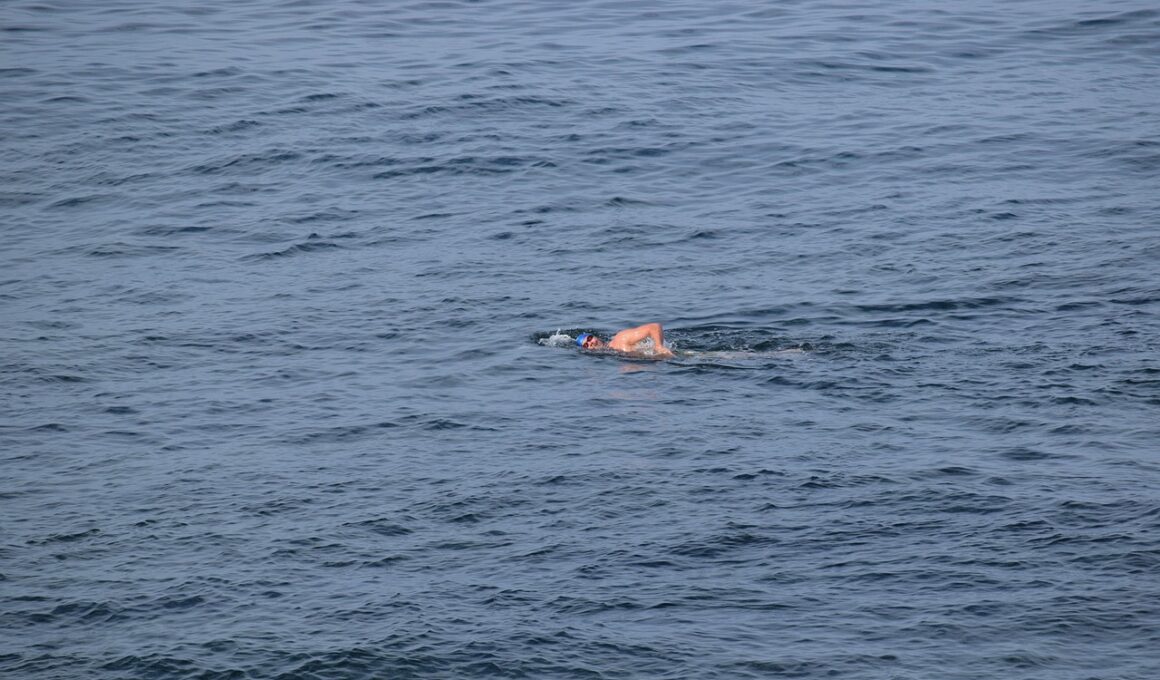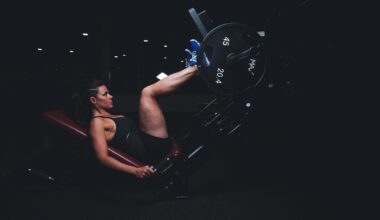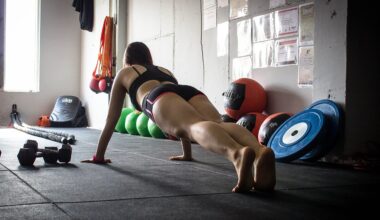Introduction to Cross-Training
Cross-training is a crucial method that open water swimmers can employ to enhance their performance. Open water swimming presents unique challenges, including varying water conditions and navigation skills that differ from pool swimming. By incorporating cross-training exercises, swimmers can condition their bodies more holistically, improving strength, endurance, and flexibility. Various activities can contribute to better swimming performance, targeting muscle groups that are often neglected. Swimming alone may not be sufficient to build overall fitness; thus, diversifying workouts is advantageous. Activities like cycling, running, and strength training can improve cardiovascular capacity and muscular strength, which are essential for tackling the challenges of open water swimming. Specifically focusing on core strength and stability can result in improved body position and reduced drag while swimming. Furthermore, developing endurance through cross-training can help swimmers complete longer distances efficiently. By exploring a range of exercises, open water swimmers can position themselves for success, ultimately leading to improved performances in competitions and practice sessions. By taking this holistic approach, swimmers can prepare not just for the physical demands of open water swimming but also for the mental challenges encountered in challenging conditions.
Strength Training Exercises
Incorporating strength training into your training routine can yield great benefits for open water swimmers. By focusing on specific muscle groups used in swimming, athletes can enhance their overall performance. Core exercises like planks and medicine ball rotations build stability, leading to better body alignment and less resistance in the water. Resistance training with weights helps to develop powerful strokes, significantly improving speed. Example exercises include deadlifts, bench presses, and rows, all of which mimic swimming movements and require engaging multiple muscle groups. Additionally, working on upper body strength, particularly through push-ups and pull-ups, can dramatically impact the power of each stroke. Swimmers should also pay attention to their hip and leg strength, ensuring that they maintain a strong kick. Using resistance bands is another excellent option for swimmers, providing additional resistance while mimicking swim-specific motions. Cross-training with strength exercises not only builds muscle but also increases overall power output when swimming, making it essential for swim-centric athletes. Note that recovery time between strength sessions is crucial to prevent injury and ensure muscle repair, ultimately leading to improved swim performance over time.
As important as strength training is, flexibility also plays a critical role in enhancing open water swimming performance. Engaging in regular flexibility sessions can help swimmers maintain a full range of motion, necessary for efficient strokes. Yoga and Pilates are excellent forms of exercise that promote both flexibility and core strength, offering vital benefits for swimmers. Specific stretches targeting the shoulders, hips, and back can help to lessen tightness and improve stroke efficiency. Stretching after workouts and during recovery days is essential, as it aids in muscle recovery and prevents injury. Improved flexibility allows for more efficient body rotation and increased reach during strokes, which can translate into faster swim times. It’s equally important to include dynamic stretching as part of warm-ups before swimming. Incorporating a routine that encompasses these stretching activities will significantly improve flexibility. A swimmer’s ability to adapt their movements dynamically in open water is crucial for responding to varying conditions effectively. Flexibility contributes not only to physical performance but also to mental readiness, enhancing a swimmer’s comfort and adaptability in open water settings.
While core strength and flexibility are fundamental, endurance training merits equal emphasis. Building stamina through cross-training can profoundly impact overall performance in open water events. Activities such as running, cycling, and rowing help increase cardiovascular endurance. Incorporating these forms of cross-training into a regular swimming schedule allows swimmers to develop effective breathing patterns, crucial for open water swimming. Interval training is particularly beneficial; alternating between high-intensity efforts and recovery periods can simulate the varying paces experienced in races. Long-distance runs or bike rides help promote the mental fortitude needed for enduring longer swim events. In open water, swimmers often need to maintain pace amidst changing conditions; hence improving mental endurance through various physical challenges fosters adaptability during races. Additionally, proper nutrition and hydration are essential components in any endurance program. With effective endurance training, swimmers can improve their capacity to sustain efforts over longer distances, which is vital in the unpredictable open water environment. Overall, cross-training for endurance serves as a powerful tool for any swimmer aiming to excel in open water competitions.
Cross-training should always include recovery-focused practices. Recovery is just as crucial as the training itself, ensuring that the body has ample time to heal, rebuild, and prepare for the next challenge. Engaging in low-impact activities, such as swimming, cycling, or gentle yoga, allows swimmers to remain active while also giving their bodies the respite they need. Active recovery promotes blood circulation, aiding in muscle recovery while minimizing the risk of injury. Implementing techniques like foam rolling or self-myofascial release can also enhance recovery by alleviating muscle tightness and improving range of motion. Importance also lies in sleep and nutrition during recovery phases; a well-balanced diet and proper hydration contribute significantly to overall performance and recovery outcomes. Swimmers should aim for at least 7-8 hours of quality sleep, facilitating muscular repair and cognitive function. A regular recovery routine that emphasizes both physical and nutritional aspects will ensure that open water swimmers maintain optimal condition year-round. This holistic approach will yield long-term benefits, sustaining both physical performance and mental readiness, which is particularly critical for open water events.
The mental aspects of open water swimming cannot be overlooked; they encompass many skills developed through cross-training. Open water swimming can introduce unpredictability compared to pool environments, necessitating strong mental fortitude. Strengthening one’s mental resilience is essential for navigating anxiety or fear when swimming in vast, open waters. Different forms of cross-training, such as hiking or team sports, encourage individuals to step out of their comfort zones and develop problem-solving skills. Engaging in activities that test mental limits enhances focus and decision-making, qualities critical when faced with changing conditions in open water. Visualization techniques also play a pivotal role; swimmers can mentally rehearse their race strategy in various conditions to improve confidence. Furthermore, proper breathing techniques learned from yoga or meditation can help swimmers manage panic or anxiety. Emphasizing the mental training aspect through cross-training ultimately leads to improved performance in high-pressure situations. Athletes can benefit greatly from embracing external challenges and using diverse experiences to bolster their confidence in open water settings.
Finally, incorporating specific drills into both swim and cross-training ensures a rounded approach to improving overall performance in open water swimming. Drills that focus on core and stroke techniques can significantly influence efficiency and speed. For instance, practicing sighting techniques regularly can enhance navigation skills and increase overall confidence in open water environments. Other effective drills include stroke count assessments, which can help swimmers be aware of their efficiency through comparing cycles. Additionally, swimming with a partner during open water sessions introduces dynamic factors such as pacing and navigation. Sprint intervals mixed with endurance swimming can also sharpen speed and adaptability. Swimmers should continuously challenge themselves by participating in different aquatic environments, from lakes to ocean swims, to simulate a variety of conditions encountered in races. Engaging in specific drills significantly enhances both physical prowess and mental readiness, essential for meeting the demands of open water competitions. Ultimately, a structured approach combining various cross-training techniques, drills, and complementary exercises will lead to improved performance and increased satisfaction in open water swimming endeavors.


